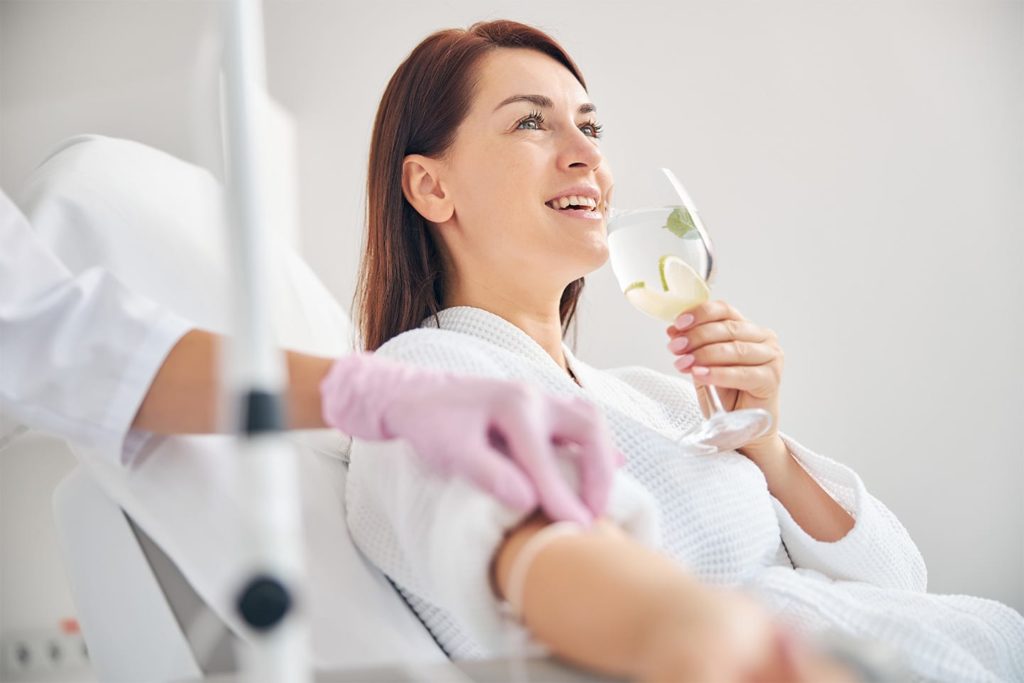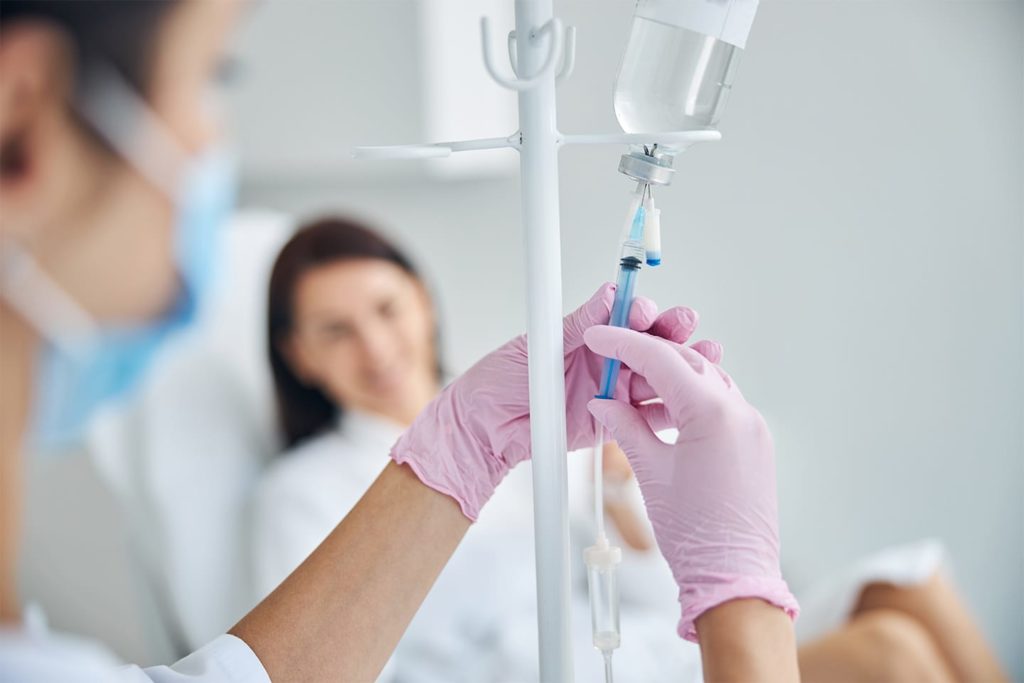When you’re suffering from the symptoms of depression, you want to find a treatment that brings relief and restores some semblance of normalcy to your life. There are many options – medication, talk therapy, and brain stimulation, among others – but a newer one that holds promise is IV therapy.

Signs of Depression
Clinical depression, or major depressive disorder, is one of the most pervasive mental illnesses. Almost 5 percent of American adults experience depression regularly. Depression is an umbrella term that also covers variations such as postpartum disorder, seasonal affective disorder (triggered during times of decreased natural sunlight), and bipolar disorder (where the lows are similar to depression in terms of symptoms).
Officially, clinical depression is defined as consistently suffering from symptoms for a minimum of two weeks, according to the National Institute of Mental Health. Common symptoms of depression include:
Feeling empty or worthless
Loss of energy
Lessened enjoyment of usual hobbies or pastimes
Withdrawal from family and friends
Changes in sleep habits and appetite
Trouble focusing
Slower movement and speech
Suicidal thoughts
Typical methods used to treat depression include antidepressants; psychotherapy techniques, such as cognitive-behavioral therapy and interpersonal therapy; and electroconvulsive therapy and transcranial magnetic stimulation that target the brain.
These treatments may take many sessions, over a long period of time, before significant changes take effect. Also, there’s no one-size-fits-all answer to treatment; some people may not respond to certain therapies, or the treatments may lose their effectiveness over time. However, IV therapy offers the promise of rapid relief, especially for people who can’t alleviate their depression symptoms with more traditional methods.


How IV Therapy Works
IV (intravenous) therapy is commonplace in clinical settings, such as hospitals and doctor’s offices. But in recent years, it’s grown in popularity with the establishment of IV lounges and mobile services that travel to a patient’s home.
During IV treatment, a medical professional administers fluids into the bloodstream through a drip IV. They insert a needle into the patient’s arm and connect it to the IV bag. The IV fluids consist of a sterile solution containing customized combinations of vitamins, minerals, medications, or other supplements. The patient remains comfortable during the treatment, which typically lasts less than an hour.
IV therapy is a powerful delivery system because the fluids are rapidly absorbed in the body for faster effectiveness than oral medications that lose some potency as they pass through the digestive system.


IVs for Depression Symptoms
In recent years, two types of IV treatment, in particular, have shown results in relieving depression symptoms: ketamine IVs and NAD+ IVs.
Ketamine IV
These IVs contain racemic ketamine. Ketamine inhibits a receptor in the brain and is typically used in anesthesia, although its off-label use for depression has increased recently. It’s not clear why exactly ketamine works as an antidepressant, although some studies think it could be the effect it has on brain receptors or ketamine’s anti-inflammatory properties.
This therapy is relatively new, which means there have been limited studies on the subject, but initial data is promising. A small study of men taking ketamine IVs for their depression symptoms found “a robust and rapid effect” evident immediately upon treatment and continued up to a month later. Another metaanalysis reported similar findings, with symptom improvement 24 hours after treatment. This study also determined there was sustained symptom relief with multiple infusion treatments.
It’s important to consult with a physician about this treatment because ketamine may have a few potential side effects and can also be addictive. Researchers from the National Institutes of Health determined there weren’t any serious, long-term side effects from one ketamine IV treatment. Still, some people may feel loopy or woozy or experience vision changes or numbness for a brief period post-IV.
NAD+ IV
NAD stands for nicotinamide adenine dinucleotide. The body produces this coenzyme naturally to help provide cellular fuel that powers our daily lives. However, our NAD production tapers off as we age. An IV containing NAD+ (the oxidized form of NAD) supplements those declining levels to enhance a state of vibrant well-being.
An NAD+ IV doesn’t just help with anti-aging support. It also may have a mood-boosting effect to help relieve symptoms of mood disorders such as depression and anxiety. That’s because NAD is the power behind sirtuins (SIRTS), which help lower brain inflammation that can be a factor in mental health disorders. NAD+ can be used in an IV on its own or combined in a Myers’ Cocktail IV, which has other ingredients that support moods, such as magnesium and B vitamins.
IV treatment for depression is an exciting field with the power to help people feel better. Before you get started, make sure you find a professional clinic with expertise in this type of therapy, one that will work with your mental health professional to coordinate and monitor your care.

